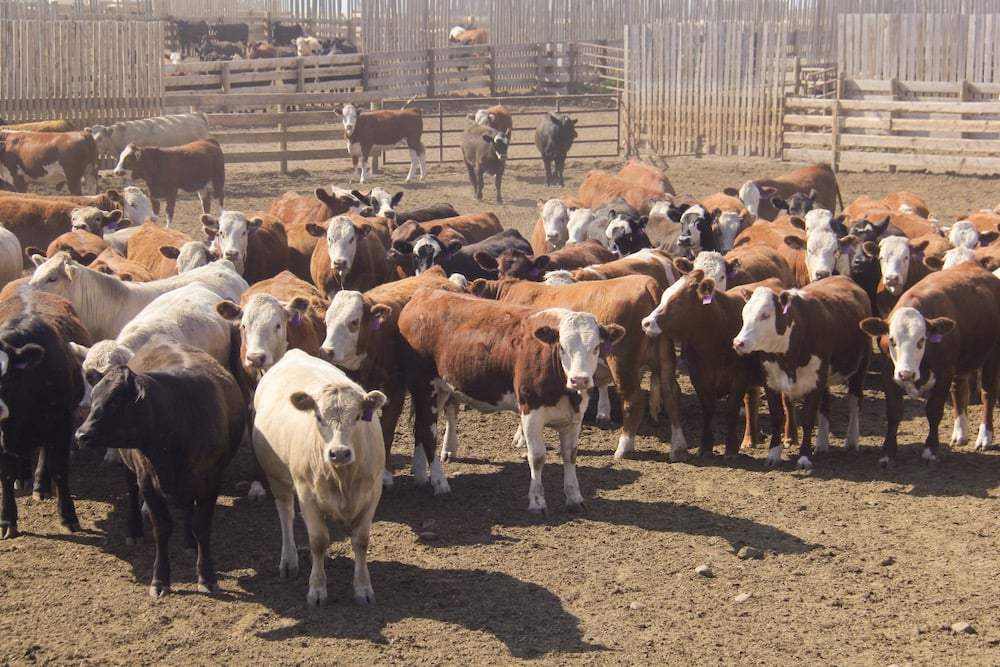Reuters — Canada released its first real roadmap to meeting 2030 climate targets on Tuesday, laying out detailed plans and $9.1 billion in new spending to cut planet-warming carbon emissions after years failing to meet its goals.
The Emissions Reduction Plan (ERP) is the first time Canada has had a comprehensive plan, rather than just a collection of policies, setting out how it will meet its international commitment to cut carbon emissions 40-45 per cent below 2005 levels by 2030.
Environmental think tanks called it a “watershed moment” for Canadian climate policy, but warned Liberal Prime Minister Justin Trudeau’s government needed to follow through.
Read Also

U.S. livestock: Feeder cattle rise to new highs on tight supply, strong cash prices
Chicago | Reuters – Chicago Mercantile Exchange feeder cattle futures rallied on Thursday to a record high on strong cash…
“A plan is just a plan without action. Expedited implementation will be key to success, and Canada now needs to shift into high gear,” said Rick Smith, president of the Canadian Climate Institute.
Canada has missed every emissions reduction target it has ever set but Trudeau said fighting climate change was one of his government’s top priorities during last year’s election campaign, and a recent deal with the opposition New Democrats should ensure the passage of climate legislation for the next three years.
Key measures include a zero-emissions vehicle mandate that is more ambitious than anything proposed by Canada’s neighbour the United States, and a target for reducing emissions from the oil and gas sector alone 42 per cent below current levels by 2030.
For the ag sector, the ERP as released Tuesday calls for $470 million for the Agricultural Climate Solutions: On-Farm Climate Action Fund, to “top up funding for some current successful applicants, broaden support to additional key climate mitigation practices, extend the program past its current end date of 2023-24, and support adoption of practices” to cut fertilizer and methane emissions.
Another existing program, the Agricultural Clean Technology program, would see its funding tripled to $330 million, going toward “broadening and expanding” its scope.
The ERP also includes $150 million to fund a “resilient agricultural landscapes” program it said would back carbon sequestration, adaptation and “other environmental co-benefits.”
Another $100 million, meanwhile, is to fund “transformative science for a sustainable sector in an uncertain climate,” including “fundamental and applied” research, improved ag extension services to support new practices and technologies, and collecting to data to gauge the ag sector’s “environmental performance” over time.
‘Different expectations’
The ERP was introduced under the requirements of Canada’s Net-Zero Accountability Act, which the government adopted last summer in a bid to produce more binding climate policies.
The country is the world’s fourth largest oil producer and 10th largest carbon emitter. The oil and gas industry is its highest polluting industry, followed by transportation.
Greenhouse gas emissions from the oil and gas sector have risen for the last two decades, meaning the 42 per cent cut from current levels will only amount to a 31 per cent cut from 2005 levels.
That lower target for the oil and gas sector means other parts of the economy will have to make deeper emissions cuts if Canada is to hit its overall 40-45 per cent reduction goal, said Simon Dyer, deputy executive director of the Pembina Institute.
“We believe the oil and gas sector has the ability to do more, and do its fair share,” Dyer said.
Trudeau said the emissions targets had to be realizable as well as ambitious and the electricity sector, for example, would be making much bigger cuts.
“Different sectors have different expectations… Canadians have had far too long of targets that have been set, but not achieved,” Trudeau told a news conference in Vancouver.
Tuesday’s plan also noted the government intends to release a separate plan this year to cut methane emissions “across the economy.” Methane, the government said, accounts for 13 per cent of Canada’s total 2019 greenhouse gas emissions, with over 90 per cent of methane emissions coming from the oil and gas, agriculture and waste management sectors combined.
Overall, the ERP sets an interim goal of cutting planet-warming carbon emissions 20 per cent below 2005 levels by 2026. While not an official target like the 2030 objective, the 2026 goal will be a major measure of whether Canada is on track.
The government is also introducing a mandate that 60 per cent of light-duty vehicles sold in 2030 must be zero-emissions, rising to 100 per cent by 2035.
Those targets put Canada “among the pack of leading jurisdictions” in terms of zero-emission vehicle mandates, said Merran Smith, executive director of Clean Energy Canada.
In the U.S., the Biden administration so far has declined to set a firm deadline for phasing out sales of combustion vehicles. Instead, President Joe Biden has set a target for 50 per cent of new cars and light trucks sold in the U.S. to be electric by 2030.
— Reporting for Reuters by Nia Williams and Ismail Shakil. Includes files from Glacier FarmMedia Network staff.
















